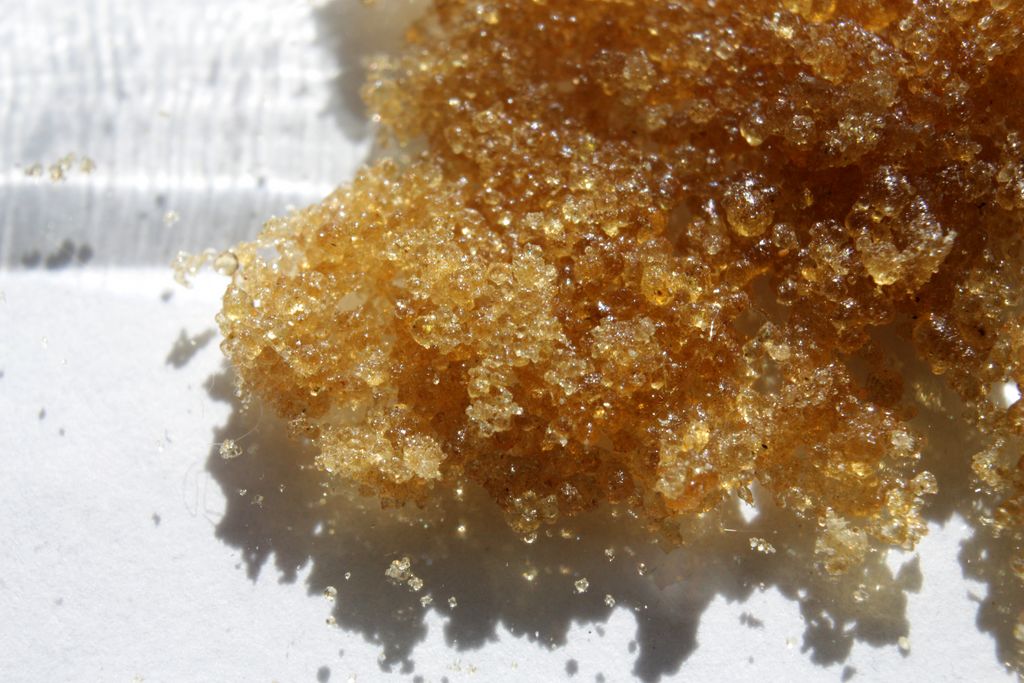Compared to the other types of hash that we have covered so far on our blog, charas (obtained by rubbing fresh plants) and dry sifted hash, the history of water hash is very recent, as this separation method is only a few decades old. After centuries of consuming cannabis resin collected fresh first, and then sieved from dried plants, a new technique appeared in the Netherlands to change the world of solvent-free concentrates: separating the trichomes from the plant material using water as medium for extraction.
The beginnings of this new technique go back to the 1990’s, when Mila Hansen (owner of the Pollinator company and creator of the first machine for automatic dry sieving) presented a new product called Ice-O-Lator, which were bags of canvas with sieves in the lower part that on the one side retained the vegetable matter, and on the other the trichomes, allowing the water to drain; A new way of making hashish was born. However, Mila was not the one who discovered this system, since already in the late 80’s an advertisement had appeared in High Times magazine where a character named “Sadu Sam” offered to teach the method in exchange for $10.
According to the legendary Dutch breeder Neville Schoenmakers, creator of varieties such as the legendary Neville’s Haze, it would have been an American guy who, years before, would have introduced the idea that trichomes sink in water, while plant matter floats. This difference in density turned out to be the key to being able to isolate the trichomes from the rest of the plant in a much cleaner environment than doing it in the air, as well as being able to control at what point one should stop shaking and go through the filter, thus obtaining pieces of hashish of a quality rarely seen until then.
During the last decades this system has evolved to a great extent, both in relation to the materials and the methodology, especially if we consider that it all started with a glass full of water and a few buds; indeed, if you put the flowers in the water and stirred a little, you could see how the trichomes would detach from the plant matter, remaining deposited at the bottom of the glass, while the plant matter would float in the water.
This was collected with a teaspoon and the water with the resin was later filtered, which only had to dry for several days before it could be used. Over the years, and still in the 1990’s, the system was perfected with the introduction on the market of bags with different micron ratings, which made it possible not only to separate the vegetable material from the resin, but also to screen the latter according to different sizes, cleaning it of impurities and obtaining a product of a much higher quality.
Ice cubes also began to be used to cool the water and facilitate the process, the producers realizing that cold was extremely important to achieve the best results, whether we are talking about, quality or quantity. Thanks to the introduction of Ice-O-Lator bags first and Bubble bags later, the resin could be separated more quickly and effectively, although that was not its main advantage; in fact, the main step forward was obtained in terms of the quality of the resin, which after several screenings with meshes of different sizes was separated according to the size of the glands, being able to achieve a quality never seen before.
Furthermore, the fact of processing the material in water allowed for an overall cleaner process, with fewer impurities contaminating the final product. Another new step forward that was taken was the change in the type of material processed; Although water hash was born as a method to separate the resin from dried flowers and leaves, after a while people began to process it “live”, freshly cut from the plant. The change in terms of flavour and aroma was really considerable, being much more faithful to that of hash obtained from already dried plants.
Due to how sticky this “live resin” could become, new handling and drying techniques soon began to be developed in order to work with it in a less cumbersome way and also achieving a better final product. Subsequently, the main advances occurred in relation to the drying of the resin once separated from the plant and collected from the bags. Rudimentary “air drying”, which used to be the most widely used method during the early years, gave way to cold drying and, later, the use of freeze-drying machines, which allow perfect drying with maximum terpene preservation, especially when working with fresh plants. With the advent of rosin presses, concentrates produced from pressing water hash began to be seen, offering a purity and quality never seen before in the realm of solventless concentrates. But we will leave the topic of Rosin Hash for a future article.

